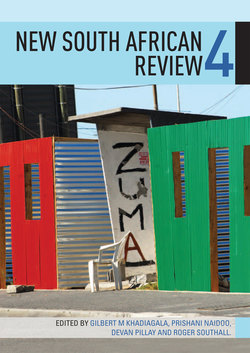Читать книгу New South African Review 4 - Devan Pillay - Страница 12
На сайте Литреса книга снята с продажи.
INTRODUCTION
ОглавлениеThe liberation from apartheid generated great expectations of change in the workplace and the labour market (Pons-Vignon and Anseeuw 2009). This was due to the key role of trade unions – both as a political force and through successful undermining of the racist order which had been established in workplaces – in overthrowing the system of minority rule, (Von Holdt 2003). Apartheid geography had ensured the racial separation of dwellings. Encounters (often brutal) between people considered to belong to different racial groups took place, mostly in what Marx calls ‘the hidden abode of production’. The history of ‘forcible commodification’ (Bernstein 1994) of southern African peasants into wage labourers, one of extreme violence, was followed by the imposition of a migrant labour system and of colour bars (limiting the promotion of blacks) across workplaces, with the active support of the state and capital. In the absence of alternative sources of income, wage employment came to occupy a central place in the daily life (or reproduction, in Marxist parlance) of most South Africans; but with a record-breaking unemployment rate (standing close to 40 per cent), more and more research points to the restoration of employer power post-1994 through the widespread use of outsourcing and an explosion in casual and informal employment (Buhlungu and Bezuidenhout 2008; Pons-Vignon, forthcoming; Von Holdt and Webster 2005). The economically liberating stable employment to which most South Africans aspire has therefore not materialised but remains the overarching objective of progressive forces in which unions continue to play a leading role (Barchiesi 2011).
And yet, reading the media or the reports produced by the International Monetary Fund (IMF), one could believe that the South African government has yielded to the dreaded sirens of populism, at least in the labour market. Rigid rules have allegedly been established, killing flexibility by over-protecting workers who are poorly skilled and over-unionised; a deadly mix which lies at the root of high unemployment and poverty (Klein 2012). Such arguments follow the South African (neo)liberal tradition (Knight 1982; Hofmeyr and Lucas 2001; Kingdon and Knight 2007) according to which the key to unlocking growth and reducing poverty in South Africa would be to reform the labour market (making it ‘flexible’) and equip poor people with useful skills. Similar arguments were used in the early 1990s to dismiss the report of the Macro-Economic Research Group (MERG, see Freund, forthcoming), and debunked by Sender (1994) who exposed their weakness. The new claims associated with this neoliberal perspective on the labour market suffer from serious empirical limitations, whether in attempts to point to ‘high’ wages as the cause of unemployment (Forslund 2013; Strauss 2013), or to claim that South Africa’s labour market is rigid (Bhorat and Cheadle 2007). This position is, however, reflected in sections of government, notably the National Treasury, which champions a ‘youth subsidy’ ensuring a transfer of taxpayer money to employers to facilitate the creation of casual jobs, and in the recently endorsed National Development Plan (NDP).
Such a perspective corresponds to a residual view of poverty (Oya 2009), according to which poverty alleviation requires a combination of free markets and improved human capital, and meaning that the poor ought to be equipped with what they lack, whether it is education or capital. The intrinsic inconsistency of such an approach has been captured by Amsden (2010) when she noted that Say’s law (supply creates demand) does not hold: increasing the supply of skilled workers will not alone generate sufficient appropriate jobs for them. Moreover, and crucially, the flawed characterisation of the South African labour market as ‘rigid’ has diverted attention away from a more grounded assessment of its performance. This chapter thus offers a critical review of post-apartheid labour market restructuring, showing that it has not failed for lack of flexibility, but rather because it has not protected poor workers. The changes which have taken place in the labour market have indeed reproduced, rather than challenged, the unequal relationship between capital and labour.
